DWARD LAW
ARMS, CRESTS & MONOGRAMS
MASONIC
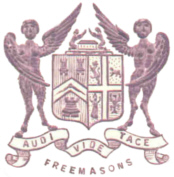 The
masonic movement is often described as the largest fraternal
movement of the world. Its origins, which are lost, were probably
in the craft organisations of the operative masons. The arms of
the movement on the left are from a Victorian set. In the
eighteenth century, and probably before, the term mason
encompassed working
The
masonic movement is often described as the largest fraternal
movement of the world. Its origins, which are lost, were probably
in the craft organisations of the operative masons. The arms of
the movement on the left are from a Victorian set. In the
eighteenth century, and probably before, the term mason
encompassed working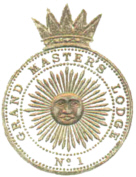 stone masons and those who had advanced to
the higher levels of the building trade and had organisational
and architectural skills.
stone masons and those who had advanced to
the higher levels of the building trade and had organisational
and architectural skills.
Whatever the origins,
the speculative masonic movement, where most of the members had
nothing to do with the trade of mason, was in being by the 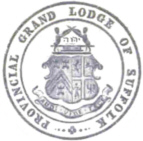 mid-seventeenth
century. In 1717 a meeting in London formed the first Grand Lodge
and laid the foundations of the modern organisational and
regulatory framework of the masonic movement. The lodge system
grew quite rapidly: the Grand Lodge of Ireland was founded in
1725, that of Scotland in 1736 and foreign lodges had been
established by 1730.
mid-seventeenth
century. In 1717 a meeting in London formed the first Grand Lodge
and laid the foundations of the modern organisational and
regulatory framework of the masonic movement. The lodge system
grew quite rapidly: the Grand Lodge of Ireland was founded in
1725, that of Scotland in 1736 and foreign lodges had been
established by 1730.
There are now over 8,500 lodges
under the English Grand Lodge with administration at local level
through 47 Provincial Grand Lodges (in England, Wales, Isle of
Man and the Channel Isles) and 36 District Grand Lodges in the
rest of the world.
The last twenty years has seen the
movement making determined efforts to remove the mystery and
myths which surround it, by a policy of much greater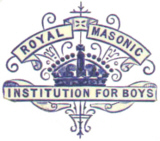 openess.
There are now many masonic web sites from that of the Grand Lodge
of England to those of individual lodges.
openess.
There are now many masonic web sites from that of the Grand Lodge
of England to those of individual lodges.
Perhaps the best known aspect of
the masonic movement, apart from the 'secret' rituals, is that of
philanthropy: illustrated here is a crest of their boys'
institution. The greater secrecy which surrounded the movement
and its members in the nineteenth century meant that very few
personal crests had an allusion to masonry; two examples are
shown below.
Other aspects of
crests of the masonic movement are dealt with on the following
separate pages:
LONDON
LODGES; PROVINCIAL
LODGES; FOREIGN
LODGES; OTHER.

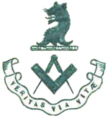
Return to HOME
PAGE
or to TOPICS
PAGE to view further pages.
Page created 21 June 2001
 The
masonic movement is often described as the largest fraternal
movement of the world. Its origins, which are lost, were probably
in the craft organisations of the operative masons. The arms of
the movement on the left are from a Victorian set. In the
eighteenth century, and probably before, the term mason
encompassed working
The
masonic movement is often described as the largest fraternal
movement of the world. Its origins, which are lost, were probably
in the craft organisations of the operative masons. The arms of
the movement on the left are from a Victorian set. In the
eighteenth century, and probably before, the term mason
encompassed working stone masons and those who had advanced to
the higher levels of the building trade and had organisational
and architectural skills.
stone masons and those who had advanced to
the higher levels of the building trade and had organisational
and architectural skills.  mid-seventeenth
century. In 1717 a meeting in London formed the first Grand Lodge
and laid the foundations of the modern organisational and
regulatory framework of the masonic movement. The lodge system
grew quite rapidly: the Grand Lodge of Ireland was founded in
1725, that of Scotland in 1736 and foreign lodges had been
established by 1730.
mid-seventeenth
century. In 1717 a meeting in London formed the first Grand Lodge
and laid the foundations of the modern organisational and
regulatory framework of the masonic movement. The lodge system
grew quite rapidly: the Grand Lodge of Ireland was founded in
1725, that of Scotland in 1736 and foreign lodges had been
established by 1730.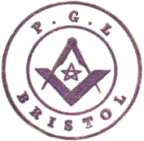
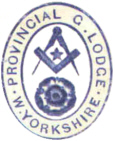

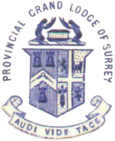
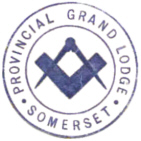
 openess.
There are now many masonic web sites from that of the Grand Lodge
of England to those of individual lodges.
openess.
There are now many masonic web sites from that of the Grand Lodge
of England to those of individual lodges.
